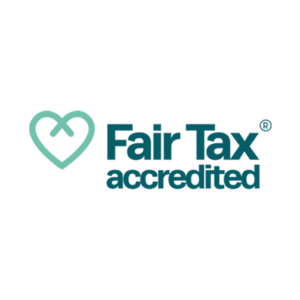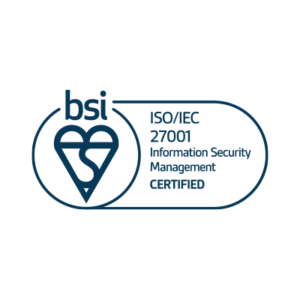Enhance Lamplight with powerful add-ons
Extend your CRM system’s capabilities as your charity grows.
Choose the modules that work best for your needs...
What else might you and your team need to do?
Audit
Keeps a log of all system activity, allowing you to verify who made updates and when.
Charge
Enables flexible rules for service fees, including discounts and invoicing options.
Communicate
Stores communication records and supports SMS, communication templates, and mail merges.
Direct Data
Gathers questionnaire data via an external web form, automating data collection and analysis.
Evaluate
Facilitates the entry and reporting of evaluation data for surveys and questionnaires.
Expense
Tracks costs for services, staff, and locations, linking them to specific work for analysis.
Library
Stores and shares resources, files, and evidence among database users.
Match
Connects individuals to opportunities based on criteria like location and interests.
Multimedia
Adds multimedia content to records, including images, videos, and scanned documents.
Manage Staff
Record and report comprehensive information about your staff and volunteers.
Publish
Link Lamplight to your website to enable people to self-refer, advertise sessions and for people to book directly.
Report Codesets
Streamline data sharing - transform your data to match third party systems. Great for MHS DS.
We highly recommend that you switch on this module. The Audit Module is a dependable way of retrieving data about all events that occur within your Lamplight system. Having a log of all activity in Lamplight means that when needed, you and your team can confirm the exact dates and times that views or updates have been made in your system and by whom.
BEST FOR: those who may have information security requirements to log all activity within your system.
This module allows you to set up rules about how much to charge for a particular service or event and who to charge (the people attending or other funders). It’s flexible and you can choose to include rules for discounts for certain attendees and late cancelation charges.
BEST FOR: seeing the charges due from different people in their profiles, and you can batch these in bulk or individually to export them to your finance package ready for invoicing.
You can already send e-mails from Lamplight with your core system. This module allows you to do more: Keep records of your communications along with your other case notes, run ad hoc and regular reports, send SMS and create templates for your routine e-mails and letters.
BEST FOR: sending appointment reminders to people via text, mail-merge using recorded fields in Lamplight, sending personalised bulk communications, and creating any number of mailing lists for specific groups.
This module allows you to gather evaluation forms such as surveys and questionnaires, as well as responses used for measuring outcomes over time, directly online. You set up your questions, invite people to answer them (either named or anonymously) and their responses go directly into Lamplight for analysis and reporting.
BEST FOR: saving you time on data collection and input by automating your feedback process.
This module allows you to enter evaluation data easily by mirroring the surveys and questionnaires you use to gather feedback from those accessing your services. You can then report on the information you gather in summary or in full and you can filter using your own criteria.
BEST FOR: finding out how things are going for your service users, spotting trends and useful for your annual reporting.
This module allows you to allocate costs to staff and other resources so that you can calculate what your different services cost. This can include the costs of a work area (perhaps your training course), the costs of locations used, and the costs of staff (hourly and on-costs when linked with staff management module). You can complete expense claims linked to specific work and track and manage expenses to authorise the claim and payment status.
BEST FOR: viewing and downloading total cost information and presenting cost data categorised by work completed.
This module allows you to document and store evidence, attach files and weblinks, produce and store static resources, store report results and create discussion threads on library items.
BEST FOR: enhanced sharing among database operators.
This module allows you to connect people to opportunities based on their preferences recorded in Lamplight. This function identifies matches can be based on criteria such a location, interests, and availability. You can then run reports on matching requests and the number of successful placements that have been set up as a result.
BEST FOR: matching people to care, employment and volunteer opportunities including befriending, mentoring and specialist support.
This module allows you to record and report comprehensive information about your staff and volunteers. It can give you insight into staff and volunteer timesheets and what proportion of time is spent on direct service delivery. You can also track staff and volunteer training, organise and record appraisal discussions, and record absences.
BEST FOR: those in management positions – information is only visible to those managing an individual and is otherwise confidential.
This module allows you to add pictures, videos, and other files including Flickr photos and YouTube videos to your Lamplight records (up to 5GB per project which can be increased). You can preview your files, download them, and even add them to Lamplight’s main search index.
BEST FOR: It’s great for enriching your case notes, further evidencing the work you do and uploading scanned documents such as CVs and referral forms so they’re all in one place.
This module allows you to link chosen information from Lamplight to your public website such as publishing a ‘what’s on’ list of up-and-coming events. You can also accept data into Lamplight from your website so people can book on events, refer themselves or update their profile information direct. You can also link your staff directory, a searchable directory of local services for people seeking support or a member’s directory of local voluntary organisations from Lamplight to your website.
BEST FOR: having a direct communication link via your website for event booking and referrals.
Report Codesets “translate” your data for external reporting. Developed for NHS Mental Health Data Set reporting, the module has multiple uses where you need to process your data from what’s in Lamplight to something else. The NHS MHS reports require you ‘code’ data – so instead of ‘female’ your dataset needs to say ’02’. No-one wants to enter data like that, so report codesets translate it when you run the report. But if you need to combine dates of birth into age bands, group postcodes, or even search free text fields for particular terms, the Report Codeset module could be for you.
BEST FOR: organisations with rigid, externally defined data export requirements.
*You don’t need this module to run reports – they are included in the core system or with particular modules.
The safeguarding module enables you to store and manage safeguarding concerns raised within your organisation. Safeguarding Managers are automatically notified whenever anyone raises a concern, and then make sure it is progressed promptly and appropriately. The dashboard gives you the overall picture and reviews help you to reflect on and improve your processes. Records of DBS checks are maintained and you’re notified before they need to be re-done.
BEST FOR: anyone needing to manage safeguarding concerns effectively.
This module allows you to create multiple waiting lists, view the progress of each waiting list and it automatically removes people once they begin to access the service they have been waiting for. You can then run and analyse waiting list turnover and progress reports.
BEST FOR: keeping track of people on waiting lists, comparing average waiting times across services and ensuring that no one is forgotten.
Ready to tailor your perfect CRM system?
Have a friendly, no-obligation chat with a real person to get all your questions answered.





